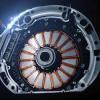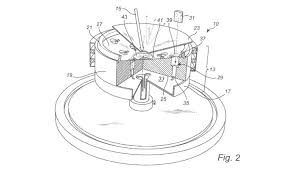
Breaking News
 Operation Mockingbird: The CIA lied to you this whole time
Operation Mockingbird: The CIA lied to you this whole time
 American Academy of Pediatrics threatens PARENTAL RIGHTS with federal mandates...
American Academy of Pediatrics threatens PARENTAL RIGHTS with federal mandates...
 Texas AI data centers drain water supply as residents face drought restrictions and shower limits
Texas AI data centers drain water supply as residents face drought restrictions and shower limits
 SpaceX's Crew-11 astronauts arrive at the International Space Station (video)
SpaceX's Crew-11 astronauts arrive at the International Space Station (video)
Top Tech News
 The mitochondria are more than just the "powerhouse of the cell" – they initiate immune...
The mitochondria are more than just the "powerhouse of the cell" – they initiate immune...
 Historic Aviation Engine Advance to Unlock Hypersonic Mach 10 Planes
Historic Aviation Engine Advance to Unlock Hypersonic Mach 10 Planes
 OpenAI CEO Sam Altman Pitches Eyeball-Scanning World ID to Bankers
OpenAI CEO Sam Altman Pitches Eyeball-Scanning World ID to Bankers
 New 3D-printed titanium alloy is stronger and cheaper than ever before
New 3D-printed titanium alloy is stronger and cheaper than ever before
 What is Unitree's new $6,000 humanoid robot good for?
What is Unitree's new $6,000 humanoid robot good for?
 "No CGI, No AI, Pure Engineering": Watch Raw Footage Of 'Star Wars'-Style Speeder
"No CGI, No AI, Pure Engineering": Watch Raw Footage Of 'Star Wars'-Style Speeder
 NASA's X-59 'quiet' supersonic jet rolls out for its 1st test drive (video)
NASA's X-59 'quiet' supersonic jet rolls out for its 1st test drive (video)
 Hypersonic SABRE engine reignited in Invictus Mach 5 spaceplane
Hypersonic SABRE engine reignited in Invictus Mach 5 spaceplane
 "World's most power dense" electric motor obliterates the field
"World's most power dense" electric motor obliterates the field
 The Wearables Trap: How the Government Plans to Monitor, Score, and Control You
The Wearables Trap: How the Government Plans to Monitor, Score, and Control You
Megawatt Muon-Catalyzed Nuclear Fusion From 100 Watt Lasering of Ultradense Deuterium

A 100-watt laser power could create a megawatt nuclear fusion generator. This would provide a total energy gain of more than ten thousand.
It would have deuterium-tritium as fuel. It would use a novel muon generator to produce 1 MW thermal power. The thermal power using pure deuterium as fuel may be up to 220 kW initially: It will increase with time up to over 1 MW due to the production of tritium in one reaction branch.
The reactor would generate neutrons so thick shielding would be needed.
Prior Lab Proof of High Energy Nuclear Fusion Reactions
The Prof Lief Holmlid research group has published studies that prove the formation of mesons and muons with up to 100 MeV u−1 energy by laser-initiated processes in ultra-dense deuterium D(0) and ultra-dense protium.
The extreme density of ultra-dense deuterium D(0) makes it an excellent fuel for nuclear fusion by inertial confinement fusion. The density is so high that only an exciting laser pulse is required and no further compression is needed to reach nuclear reaction conditions.



